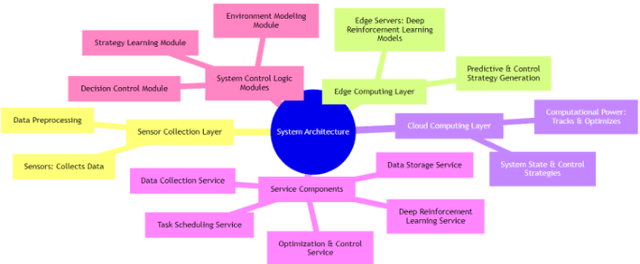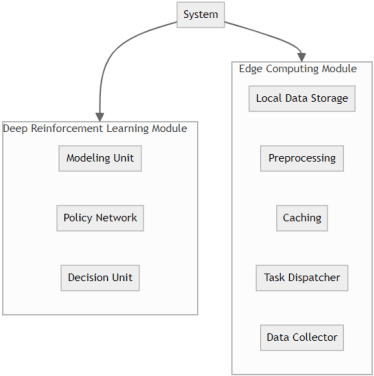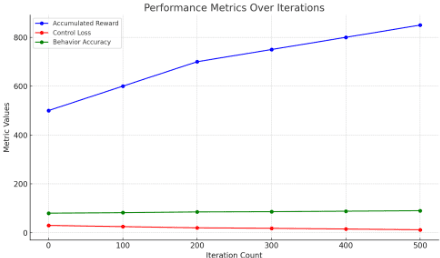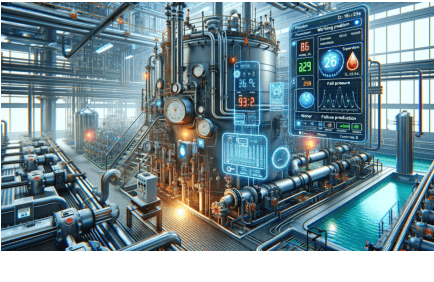Jingyu Xu
FMD-TransUNet: Abdominal Multi-Organ Segmentation Based on Frequency Domain Multi-Axis Representation Learning and Dual Attention Mechanisms
Sep 19, 2025Abstract:Accurate abdominal multi-organ segmentation is critical for clinical applications. Although numerous deep learning-based automatic segmentation methods have been developed, they still struggle to segment small, irregular, or anatomically complex organs. Moreover, most current methods focus on spatial-domain analysis, often overlooking the synergistic potential of frequency-domain representations. To address these limitations, we propose a novel framework named FMD-TransUNet for precise abdominal multi-organ segmentation. It innovatively integrates the Multi-axis External Weight Block (MEWB) and the improved dual attention module (DA+) into the TransUNet framework. The MEWB extracts multi-axis frequency-domain features to capture both global anatomical structures and local boundary details, providing complementary information to spatial-domain representations. The DA+ block utilizes depthwise separable convolutions and incorporates spatial and channel attention mechanisms to enhance feature fusion, reduce redundant information, and narrow the semantic gap between the encoder and decoder. Experimental validation on the Synapse dataset shows that FMD-TransUNet outperforms other recent state-of-the-art methods, achieving an average DSC of 81.32\% and a HD of 16.35 mm across eight abdominal organs. Compared to the baseline model, the average DSC increased by 3.84\%, and the average HD decreased by 15.34 mm. These results demonstrate the effectiveness of FMD-TransUNet in improving the accuracy of abdominal multi-organ segmentation.
FMT:A Multimodal Pneumonia Detection Model Based on Stacking MOE Framework
Mar 07, 2025



Abstract:Artificial intelligence has shown the potential to improve diagnostic accuracy through medical image analysis for pneumonia diagnosis. However, traditional multimodal approaches often fail to address real-world challenges such as incomplete data and modality loss. In this study, a Flexible Multimodal Transformer (FMT) was proposed, which uses ResNet-50 and BERT for joint representation learning, followed by a dynamic masked attention strategy that simulates clinical modality loss to improve robustness; finally, a sequential mixture of experts (MOE) architecture was used to achieve multi-level decision refinement. After evaluation on a small multimodal pneumonia dataset, FMT achieved state-of-the-art performance with 94% accuracy, 95% recall, and 93% F1 score, outperforming single-modal baselines (ResNet: 89%; BERT: 79%) and the medical benchmark CheXMed (90%), providing a scalable solution for multimodal diagnosis of pneumonia in resource-constrained medical settings.
Advanced Object Detection and Pose Estimation with Hybrid Task Cascade and High-Resolution Networks
Feb 06, 2025Abstract:In the field of computer vision, 6D object detection and pose estimation are critical for applications such as robotics, augmented reality, and autonomous driving. Traditional methods often struggle with achieving high accuracy in both object detection and precise pose estimation simultaneously. This study proposes an improved 6D object detection and pose estimation pipeline based on the existing 6D-VNet framework, enhanced by integrating a Hybrid Task Cascade (HTC) and a High-Resolution Network (HRNet) backbone. By leveraging the strengths of HTC's multi-stage refinement process and HRNet's ability to maintain high-resolution representations, our approach significantly improves detection accuracy and pose estimation precision. Furthermore, we introduce advanced post-processing techniques and a novel model integration strategy that collectively contribute to superior performance on public and private benchmarks. Our method demonstrates substantial improvements over state-of-the-art models, making it a valuable contribution to the domain of 6D object detection and pose estimation.
Enhancing Healthcare Recommendation Systems with a Multimodal LLMs-based MOE Architecture
Dec 16, 2024



Abstract:With the increasing availability of multimodal data, many fields urgently require advanced architectures capable of effectively integrating these diverse data sources to address specific problems. This study proposes a hybrid recommendation model that combines the Mixture of Experts (MOE) framework with large language models to enhance the performance of recommendation systems in the healthcare domain. We built a small dataset for recommending healthy food based on patient descriptions and evaluated the model's performance on several key metrics, including Precision, Recall, NDCG, and MAP@5. The experimental results show that the hybrid model outperforms the baseline models, which use MOE or large language models individually, in terms of both accuracy and personalized recommendation effectiveness. The paper finds image data provided relatively limited improvement in the performance of the personalized recommendation system, particularly in addressing the cold start problem. Then, the issue of reclassification of images also affected the recommendation results, especially when dealing with low-quality images or changes in the appearance of items, leading to suboptimal performance. The findings provide valuable insights into the development of powerful, scalable, and high-performance recommendation systems, advancing the application of personalized recommendation technologies in real-world domains such as healthcare.
A Consolidated Volatility Prediction with Back Propagation Neural Network and Genetic Algorithm
Dec 10, 2024



Abstract:This paper provides a unique approach with AI algorithms to predict emerging stock markets volatility. Traditionally, stock volatility is derived from historical volatility,Monte Carlo simulation and implied volatility as well. In this paper, the writer designs a consolidated model with back-propagation neural network and genetic algorithm to predict future volatility of emerging stock markets and found that the results are quite accurate with low errors.
Causal Deciphering and Inpainting in Spatio-Temporal Dynamics via Diffusion Model
Sep 29, 2024Abstract:Spatio-temporal (ST) prediction has garnered a De facto attention in earth sciences, such as meteorological prediction, human mobility perception. However, the scarcity of data coupled with the high expenses involved in sensor deployment results in notable data imbalances. Furthermore, models that are excessively customized and devoid of causal connections further undermine the generalizability and interpretability. To this end, we establish a causal framework for ST predictions, termed CaPaint, which targets to identify causal regions in data and endow model with causal reasoning ability in a two-stage process. Going beyond this process, we utilize the back-door adjustment to specifically address the sub-regions identified as non-causal in the upstream phase. Specifically, we employ a novel image inpainting technique. By using a fine-tuned unconditional Diffusion Probabilistic Model (DDPM) as the generative prior, we in-fill the masks defined as environmental parts, offering the possibility of reliable extrapolation for potential data distributions. CaPaint overcomes the high complexity dilemma of optimal ST causal discovery models by reducing the data generation complexity from exponential to quasi-linear levels. Extensive experiments conducted on five real-world ST benchmarks demonstrate that integrating the CaPaint concept allows models to achieve improvements ranging from 4.3% to 77.3%. Moreover, compared to traditional mainstream ST augmenters, CaPaint underscores the potential of diffusion models in ST enhancement, offering a novel paradigm for this field. Our project is available at https://anonymous.4open.science/r/12345-DFCC.
Practical Applications of Advanced Cloud Services and Generative AI Systems in Medical Image Analysis
Mar 26, 2024Abstract:The medical field is one of the important fields in the application of artificial intelligence technology. With the explosive growth and diversification of medical data, as well as the continuous improvement of medical needs and challenges, artificial intelligence technology is playing an increasingly important role in the medical field. Artificial intelligence technologies represented by computer vision, natural language processing, and machine learning have been widely penetrated into diverse scenarios such as medical imaging, health management, medical information, and drug research and development, and have become an important driving force for improving the level and quality of medical services.The article explores the transformative potential of generative AI in medical imaging, emphasizing its ability to generate syntheticACM-2 data, enhance images, aid in anomaly detection, and facilitate image-to-image translation. Despite challenges like model complexity, the applications of generative models in healthcare, including Med-PaLM 2 technology, show promising results. By addressing limitations in dataset size and diversity, these models contribute to more accurate diagnoses and improved patient outcomes. However, ethical considerations and collaboration among stakeholders are essential for responsible implementation. Through experiments leveraging GANs to augment brain tumor MRI datasets, the study demonstrates how generative AI can enhance image quality and diversity, ultimately advancing medical diagnostics and patient care.
Dynamic Resource Allocation for Virtual Machine Migration Optimization using Machine Learning
Mar 20, 2024Abstract:The paragraph is grammatically correct and logically coherent. It discusses the importance of mobile terminal cloud computing migration technology in meeting the demands of evolving computer and cloud computing technologies. It emphasizes the need for efficient data access and storage, as well as the utilization of cloud computing migration technology to prevent additional time delays. The paragraph also highlights the contributions of cloud computing migration technology to expanding cloud computing services. Additionally, it acknowledges the role of virtualization as a fundamental capability of cloud computing while emphasizing that cloud computing and virtualization are not inherently interconnected. Finally, it introduces machine learning-based virtual machine migration optimization and dynamic resource allocation as a critical research direction in cloud computing, citing the limitations of static rules or manual settings in traditional cloud computing environments. Overall, the paragraph effectively communicates the importance of machine learning technology in addressing resource allocation and virtual machine migration challenges in cloud computing.
Improved YOLOv5 Based on Attention Mechanism and FasterNet for Foreign Object Detection on Railway and Airway tracks
Mar 13, 2024



Abstract:In recent years, there have been frequent incidents of foreign objects intruding into railway and Airport runways. These objects can include pedestrians, vehicles, animals, and debris. This paper introduces an improved YOLOv5 architecture incorporating FasterNet and attention mechanisms to enhance the detection of foreign objects on railways and Airport runways. This study proposes a new dataset, AARFOD (Aero and Rail Foreign Object Detection), which combines two public datasets for detecting foreign objects in aviation and railway systems.The dataset aims to improve the recognition capabilities of foreign object targets. Experimental results on this large dataset have demonstrated significant performance improvements of the proposed model over the baseline YOLOv5 model, reducing computational requirements.Improved YOLO model shows a significant improvement in precision by 1.2%, recall rate by 1.0%, and mAP@.5 by 0.6%, while mAP@.5-.95 remained unchanged. The parameters were reduced by approximately 25.12%, and GFLOPs were reduced by about 10.63%. In the ablation experiment, it is found that the FasterNet module can significantly reduce the number of parameters of the model, and the reference of the attention mechanism can slow down the performance loss caused by lightweight.
The Fusion of Deep Reinforcement Learning and Edge Computing for Real-time Monitoring and Control Optimization in IoT Environments
Feb 28, 2024



Abstract:In response to the demand for real-time performance and control quality in industrial Internet of Things (IoT) environments, this paper proposes an optimization control system based on deep reinforcement learning and edge computing. The system leverages cloud-edge collaboration, deploys lightweight policy networks at the edge, predicts system states, and outputs controls at a high frequency, enabling monitoring and optimization of industrial objectives. Additionally, a dynamic resource allocation mechanism is designed to ensure rational scheduling of edge computing resources, achieving global optimization. Results demonstrate that this approach reduces cloud-edge communication latency, accelerates response to abnormal situations, reduces system failure rates, extends average equipment operating time, and saves costs for manual maintenance and replacement. This ensures real-time and stable control.
 Add to Chrome
Add to Chrome Add to Firefox
Add to Firefox Add to Edge
Add to Edge